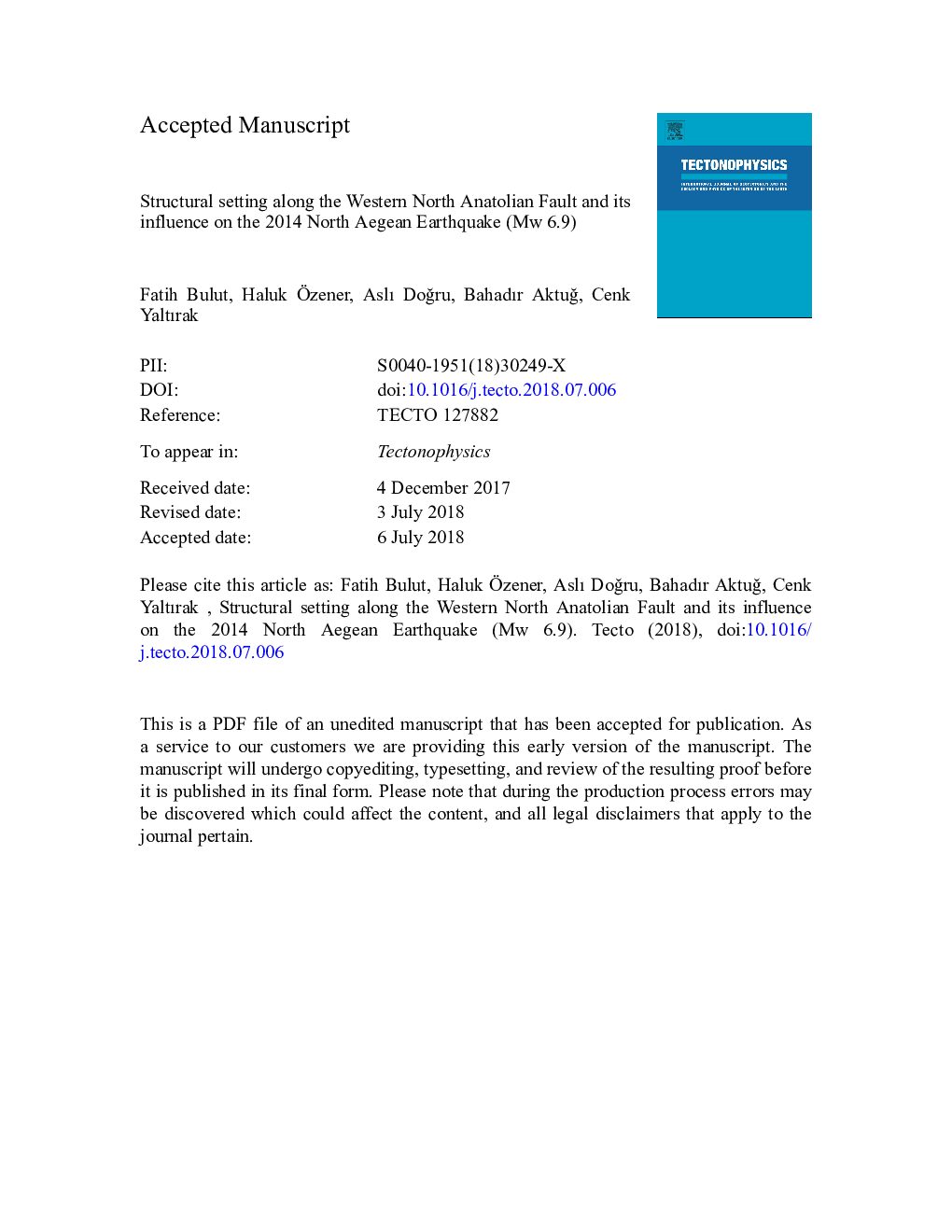| Article ID | Journal | Published Year | Pages | File Type |
|---|---|---|---|---|
| 9528386 | Tectonophysics | 2018 | 33 Pages |
Abstract
We investigated microseismicity, geodetic slip and structural setting along the western North Anatolian Fault (NAF) to characterize their influence on pre-, co- and post-seismic stages of the 2014 North Aegean Earthquake (M 6.9). We identified that the NAF in North Aegean Sea (NAS) operates beneath three basins and two transpressional ridges rather than a single through-going basin. Refined hypocenters indicate that NAF is a narrow shear-zone in the east, and systematically expands towards the west. Microseismicity has a wide spread epicentral pattern at pre-seismic stage of the 2014 earthquake, but later tightens during post-seismic stage. This suggests that pre-seismic strain accumulation was completed on the main fault and transferred to surrounding secondary structures, and the slip returned back to the main fault following the mainshock. Overall microseismicity pattern shows that seismogenic zone becomes deeper to the west and shallower to the east. Three fault segments merged with two step-overs have failed during the 2014 North Aegean Earthquake rupturing a ~90â¯km section of the NAF. The co-seismic slips reach ~90â¯cm beneath western step-over and remains below ~60â¯cm beneath eastern step-over. Along-fault pre- and co-seismic geodetic slips show a complementary pattern verifying that the 2014 mainshock generated the highest slip at pre-seismically locked patches, located beneath transpressive ridges hosting two step-overs. The existence of high pre-shock concentrations underneath suggests fracturing at seismogenic basement overcoming frictional strength at these two fault step-overs.
Related Topics
Physical Sciences and Engineering
Earth and Planetary Sciences
Earth-Surface Processes
Authors
Fatih Bulut, Haluk Ãzener, Aslı DoÄru, Bahadır AktuÄ, Cenk Yaltırak,
